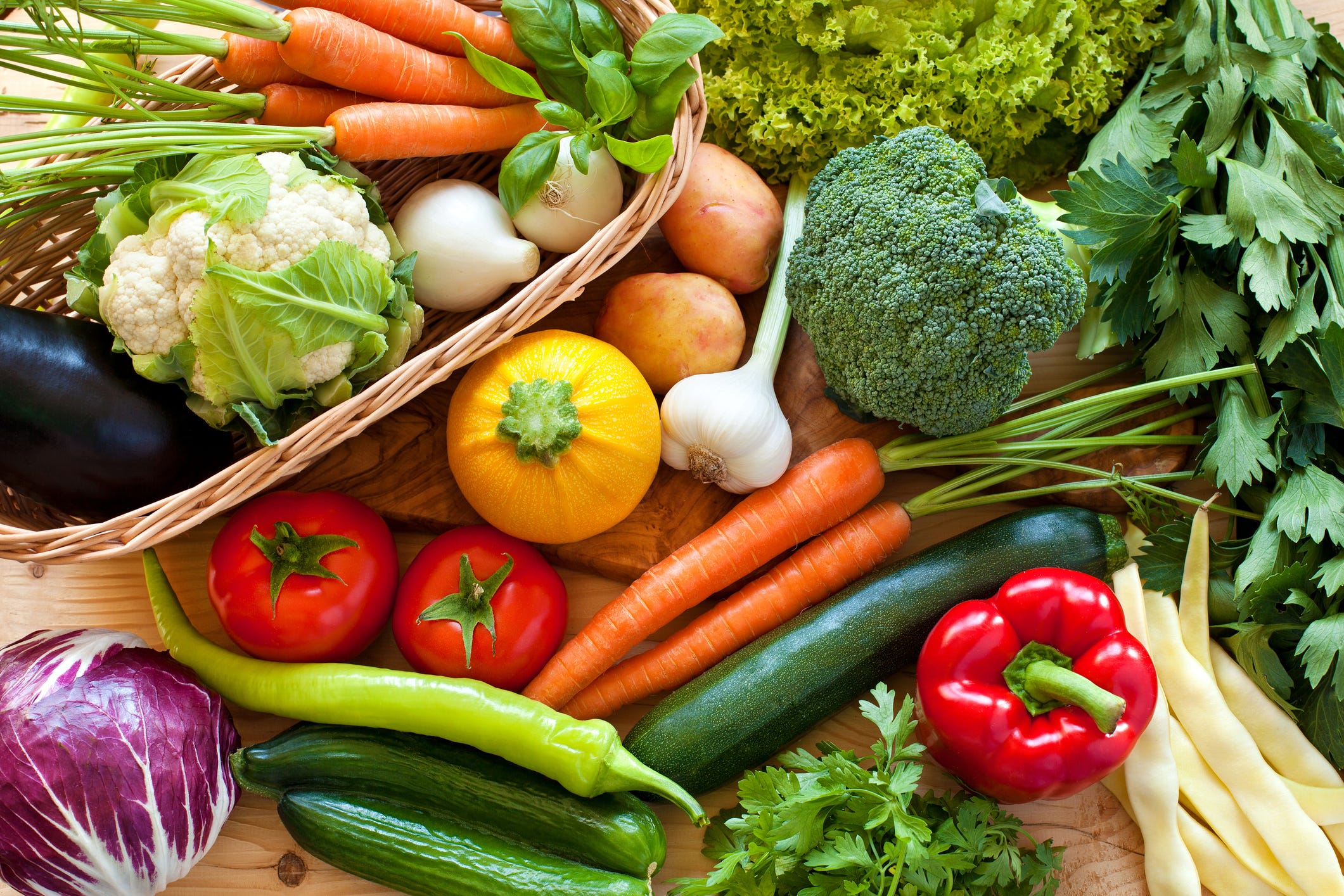What is the healthiest vegetable? There isn’t one ‘best’, but these are great nutrient-dense options.

Only one in 10 adults consume the recommended daily vegetable intake, the Centers for Disease Control and Prevention says. And while a regular intake of vegetables is crucial to a healthy diet, food insecurity in 27% of American households shows there are significant barriers to accessing vegetables to cook at home.
If you’re looking to increase your daily vegetable intake, look no further. Here’s a guide to the most nutrient-dense veggies, plus tips for incorporating more fresh and frozen greens into your diet.
What is the healthiest vegetable?
When it comes to vegetables, registered dietitian and nutritionist Danielle Crumble Smith says “don’t discriminate.”
She says there isn’t just one “healthiest” vegetable, though there are some particularly nutrient-dense options to keep an eye out for. Here’s a look:
Leafy greens
“Dark leafy greens get a lot of attention and for good reason,” she says. “They have vitamin K, they’re rich in calcium and a host of different antioxidants.”
Most people think of spinach when they hear “leafy greens,” but Crumble Smith recommends widening your palate and trying chard, collard greens, mustard greens or beet greens.
What is the healthiest fruit?: This one is high in antioxidants and has cognitive and cardiovascular benefits.
Cruciferous vegetables: Broccoli, cauliflower, asparagus and more
Cruciferous vegetables make another great addition to one’s diet. Those include broccoli, cauliflower, Brussels sprouts, asparagus, cabbage and bok choy, among others.
Cruciferous vegetables contain fiber, phytonutrients to prevent cellular damage and indole-3-carbinol, a compound shown to decrease estrogen dominance and reduce the risks of estrogen-related cancers as well as colon cancer, Crumble Smith says.
But there are some specifics to look out for when it comes to vegetables and your specific dietary needs. (As always, consult your physician if you have specific questions related to your diet.)
Spinach, beet greens and chard contain oxalates, which can bind to minerals like calcium and inhibit their absorption. For this reason, Crumble Smith recommends that people who are dairy-free should look outside of leafy greens to satisfy calcium needs.
People who have had oxalate kidney stones and want to prevent future recurrence may also want to be wary of vegetables with high oxalate content, though she says drinking enough water every day can also decrease the risk.
Crumble Smith says these vegetables are still good sources of vitamin K, lutein and vitamin C, so it’s not a reason to avoid them, or any other vegetable, completely.
Starch vegetables, which include potatoes, corn, squash, peas and carrots and others, often get a bad rap because of their carbohydrate content.
“Those have a host of nutrients, but also do provide carbohydrates and they can elevate blood sugar levels,” Crumble Smith says. “People who have diabetes or any sort of insulin resistance and people who have weight loss goals, over-consuming carbohydrates could interfere with their weight loss.”
But that doesn’t mean you should avoid starchy vegetables – they’re an excellent source of fiber and potassium, which can help control high blood pressure.
Crumble Smith says starch vegetables in one’s diet can fuel runners for longer distances and assist with recovery.
How to eat less ultra-processed foods: Avoid health risks with these new practices
What foods are high in iron?: Here are some healthy options to add to your diet
How to incorporate more vegetables into your diet
The U.S. Department of Agriculture recommends 2 to 3 cups of vegetables per day for adult women and 3 to 4 cups for adult men. Here are a few examples of what counts as “one cup” of vegetables:
- One cup of cooked dark green vegetables
- One cup of broccoli (fresh or frozen)
- Two cups of fresh raw leafy greens
- Two medium carrots or one cup of baby carrots
- One large bell pepper
- One large baked sweet potato or one cup mashed or sliced
- One avocado
Tossing extra vegetables into soups, stews and sandwiches is also a good way to reach your recommended daily intake. But if that doesn’t sound appetizing, try these tips from Crumble Smith:
- Puree them: Put liquified vegetables into a homemade or store-bought sauce so they’re almost unrecognizable. You can also sneak them into meatballs, meatloaf or burger patties. “That’s especially helpful for people who have texture issues,” she says.
- Grate or shred them: Grated zucchini and carrots make good additions to oatmeal, or you can try adding shredded vegetables to a salad for a different texture.
- Blend them: Add veggies to a smoothie or juice and add some hidden nutrients. Using frozen vegetables in smoothies is a great way to get a colder, thicker consistency to your shake.
- Try them with a sauce: Dip or pair your vegetables with chimichurri, hummus, hot sauce, aiolis or even a cheese sauce.
- Spice it up: Try adding a little salt, pepper, garlic or other seasonings to your vegetables when cooking them. This can enhance the flavor and bring a twist to a cooked classic.
Are frozen vegetables healthy?
Your instinct may be to look for fresh vegetables rather than stocking your freezer with frozen ones. But unless you’re buying them locally and know exactly how long they’ve been sitting out since being harvested, Crumble Smith says frozen veggies actually have more to offer.
“They’re flash frozen at their peak stage of ripeness when all those nutrients are there and preserved,” she says. “Frozen veggies are a great, very nutrient-dense option and they’re also really good for people who forget there are veggies in the fridge that might be going bad before they get to it.”
Where are all the eggs?: Try these eggless recipes amid shortage, rising prices
Just Curious?: We’re answering your everyday questions
For all the latest Lifestyle News Click Here
For the latest news and updates, follow us on Google News.

